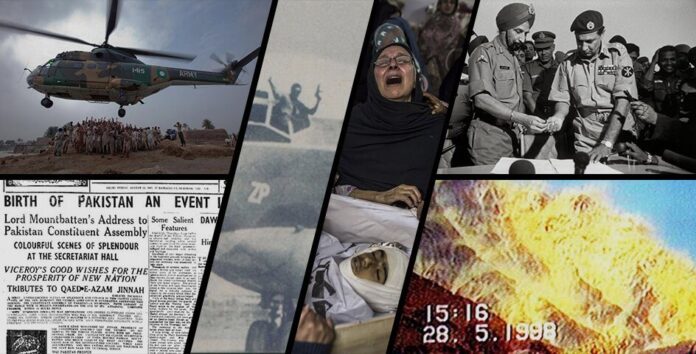The idea of a Muslim-majority state in India began in the late 1940s with the formation of the All-India Muslim League. In the same year, Muslims in India united to form the Islamic Republic of Pakistan. The new state was envisioned as an ally to the Indian government, and the All-India Muslim League believed the demand would create a peaceful society.
The word Pakistan, meaning “Land of the Pure,” is derived from the Urdu language. It is believed that this name reflects the region’s Islamic heritage.
The country’s name is derived from the fact that areas of present-day Pakistan were independent in the fourth century.
Empires Involvement in History of Pakistan
The Delhi Sultanate’s rule continued until the thirteenth century. In the twentieth century, the British East India Company gained control of the country, and the Mughal Empire was dissolved.
The history of Pakistan goes back much further than that. In fact, it is the creation of the Muslim nation of India that is most recognizable today. The country was not always so independent. The Gupta Empire, for example, ruled parts of what is now Pakistan. This independence came about after the emergence of Islam. In the fourth century, some of the areas of present-day Pakistan were almost independent of the Delhi Sultanate.
What happened After 1947
After the formation of the state, the country was split into two different nations. East Pakistan, also known as East Bengal, and West Pakistan, was separated from the rest of the country. The Government of Pakistan proclaimed Urdu as the official national language on 23 February 1948.
The Bengali-speaking population in East Bangladesh was dissatisfied and outlawed any protests. On 21 February 1952, students at the University of Dhaka organized a protest. The police opened fire and shot the demonstrators, killing two people.
The formation of Pakistan began in 1947 after the partition. The partition had a major impact on the region. Various ethnic groups were displaced, and the British Government had to deal with this new situation. Eventually, the British government acknowledged that the Muslim-majority country needed to create a separate nation. In this way, the country was a part of India. The creation of the state of Pakistan came about after a war.
Indus Valley Civilization
The Indus Valley Civilisation lasted for a millennium before the partition and was later replaced by the Vedic Civilisation. The Achaemenid Persian Empire was established around 543 BCE, and the Muslim-majority Congress adopted the plan. Hindu-majority Punjab was formed in 326 BCE. The Shahi Jirga, the parliament, and the Senate both voted in favor of Pakistan’s independence.
Now Hero’s Turn
In the early 1970s, Sherbaz Khan Mazari, a seventeen-year-old youth, enthused about the idea of a Pakistani nation. He was a committed democrat and the most honest politician in the subcontinent. He believed that the country’s best chance was to emerge as a democratic nation after years of military rule. In 1971, he and Zulfikar Ali Bhutto became the first democratic civilian leader of Pakistan.
Jinnah and the other founding fathers agreed to name Liaquat Ali Khan as their first prime minister and president, respectively. After the partition, the first ruler of Pakistan was elected as governor-general, and a second prime minister was elected to be appointed.
The president was chosen by the Senate to ensure the stability of the country. But the constitution of the nation was not final, and the two sides did not reach an agreement on the name of the new country.
In 1947, a Muslim minority group led by Mohammed Bin Qasim invaded the region. They ruled for about 200 years, and Islam influenced the lives of the people in the region. After the partition, Pakistan’s political system changed, and the Muslim League gained a majority in both Punjab and Sind. By dividing the population into two states, the population in the north and east was divided into two equal regions.
Follow Pakistan Draft on Facebook, and Twitter for a more daily dose of news revolving around Pakistan.

